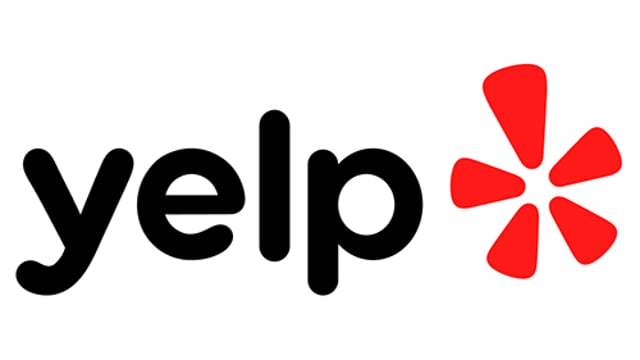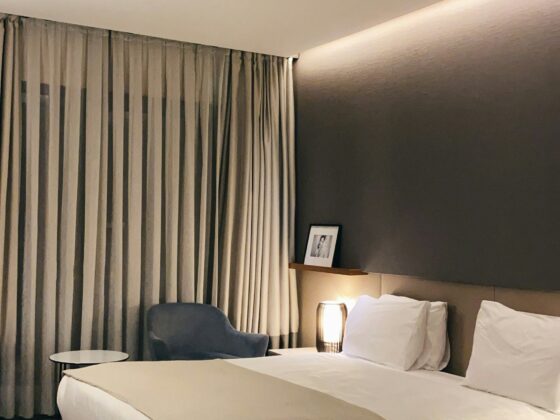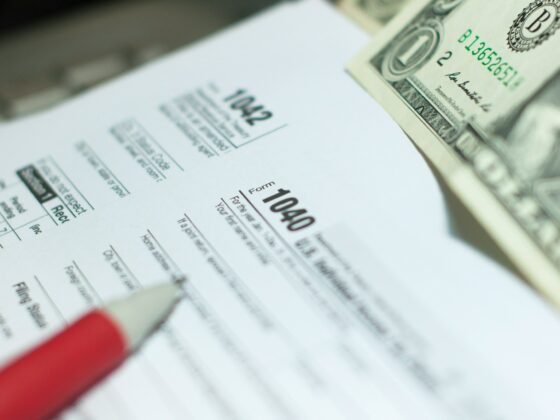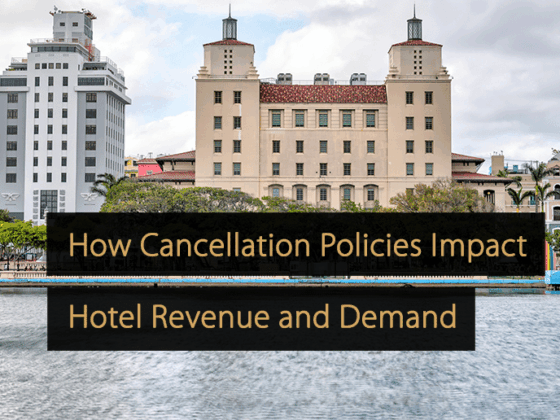The average revenue per account, or ARPA, is a KPI used in the hotel industry for revenue management. The metric tells hotel owners the amount of revenue generated, on average, per customer account. As a result, it is a good indicator of business performance. The metric is sometimes known as average revenue per user.
Table of Contents:
What Does ARPA Stand for?
ARPA, or annual revenue per account, details the average revenue a hotel generates from each of its customers’ accounts over a specified period. It is, therefore, extremely valuable for those in the hotel industry because it can demonstrate business growth at a per-unit level.
This KPI is especially valuable for segmenting corporate contracts, group bookings, and frequent traveler programs. ARPA shines where traditional metrics like RevPAR focus on rooms rather than account-level profitability.
Why ARPA Is Important for Hotel Profitability?
ARPA is important for hotel profitability because it shows the real financial performance of each account by including both costs and total revenue streams. Traditional metrics like RevPAR focus only on room revenue, without considering the expenses of servicing guests or the extra money they spend on dining, events, or amenities.
For example, the U.S. hotel industry achieved a record-breaking RevPAR of $101.82, yet only 30% of hotel brands delivered above-average RevPAR growth between 2018 and 2023. This shows revenue gains alone don’t guarantee profitability.
Hotels that track ARPA can make smarter pricing decisions. They ensure that they maximize actual profit instead of just revenue. This helps managers determine whether lowering rates to fill rooms truly adds value or if higher rates with fewer guests deliver stronger returns. ARPA also highlights which services contribute most to profitability. It enables hotels to grow margins and achieve sustainable revenue growth.
How Do You Calculate ARPA?
In order to calculate ARPA, a time period must be decided. It is usually done on a monthly or yearly basis. Looking back at recent past months can help to establish the average revenue per existing account, while measuring upcoming months and comparing them to past performance can help to show average revenue per new account.
The basic formula for calculating average revenue per account is as follows:
ARPA = (Monthly) Recurring Revenue / Total Number of Accounts
Essential ARPA Implementation Components
Successful ARPA implementation requires systematic integration of these elements into daily hotel operations and strategic planning processes.
- Cost Tracking Systems: Implement comprehensive variable cost monitoring, including housekeeping, utilities, amenities, maintenance, and guest services, to ensure accurate per-room expense calculations.
- Revenue Integration Platforms: Deploy technology solutions that capture and integrate all revenue streams, including room rates, ancillary services, food & beverage, and facility usage, for complete profitability analysis.
- Performance Management Tools: Utilize advanced analytics platforms that calculate ARPA metrics in real-time and provide actionable insights for pricing and inventory optimization decisions.
- Staff Training Programs: Develop comprehensive education initiatives that ensure revenue managers and operational staff understand ARPA principles and can implement optimization strategies effectively.
- Competitive Intelligence Systems: Establish market monitoring capabilities that enable ARPA-based competitive analysis and strategic positioning relative to comparable properties in the market.
- Financial Reporting Integration: Create standardized reporting processes that incorporate ARPA metrics into daily, weekly, and monthly performance reviews and strategic planning sessions.
5 Strategic Benefits of Implementing ARPA
Below are some key benefits that will help hoteliers maximize their property’s financial performance through comprehensive revenue optimization strategies.
1. Enhanced Profit Visibility and Decision-Making
ARPA gives hotel managers a clearer view of true room profitability by considering both revenue and costs linked to each guest’s stay. Unlike traditional metrics, it highlights which guest segments, room types, and booking channels generate the most profit, not just the most revenue. This insight helps managers make smarter decisions about pricing, inventory, and resource allocation. It also improves forecasting and budgeting by offering more accurate profit projections. Hotels using ARPA report greater confidence in revenue management strategies and an enhanced ability to optimize performance in both high-demand and slower periods.
2. Optimized Pricing Strategies Beyond Basic Revenue
ARPA helps hotels move beyond basic room-rate strategies by focusing on total guest value. According to STR analysis, luxury hotels saw 7.1% RevPAR growth year-to-date in 2024, while economy segments achieved just 0.9%. The figures show how smart revenue strategies create stronger results. Hotels using ARPA avoid lowering rates just to boost occupancy, which can hurt profits. Instead, they set price points that balance value and returns. It also supports value-based pricing that reflects service costs and ancillary revenue, such as restaurants, spas, or meeting spaces, ensuring sustainable profit growth across all segments.
3. Improved Cost Management and Operational Efficiency
ARPA requires hotels to track variable costs like housekeeping, utilities, and amenities more carefully. This leads to better cost control and efficiency. Cornell research shows properties using full revenue strategies grew revenue five times more than traditional ones. By monitoring costs closely, hotels find areas to save without lowering guest satisfaction. STR data shows labor costs rose 3.1%, making cost tracking vital for profits. ARPA helps hotels not only optimize revenue but also improve processes, reduce waste, and expand overall margins.
4. Strategic Ancillary Revenue Optimization
ARPA includes ancillary services like spa, F&B, or parking, encouraging hotels to grow these profits. Case studies by Strategic Solution Partners show hotels increased RevPAR by 25% in two months through this approach. Tracking service revenues helps hotels see which amenities matter most to profitability. For example, CBRE found hotels with free breakfast doubled RevPAR growth compared to those without since 2013. ARPA encourages packaging services effectively, boosting guest satisfaction, loyalty, and spending. This creates a complete revenue ecosystem instead of relying mainly on rooms.
5. Competitive Positioning and Performance Benchmarking
ARPA helps hotels compare true profit performance, not just revenue, with competitors. STR data shows brand competition is increasing, with families now averaging 25 brands versus 13 a few years back. By focusing on ARPA, hotels can spot their strengths and weaknesses against rivals. This allows smarter competitive responses during rate wars or promotions. IDeaS Revenue Management, serving 18,000 properties with a 98% retention rate, proves how profit-focused strategies work. ARPA helps hotels maintain discipline, defend market share, and achieve sustainable competitive advantage.
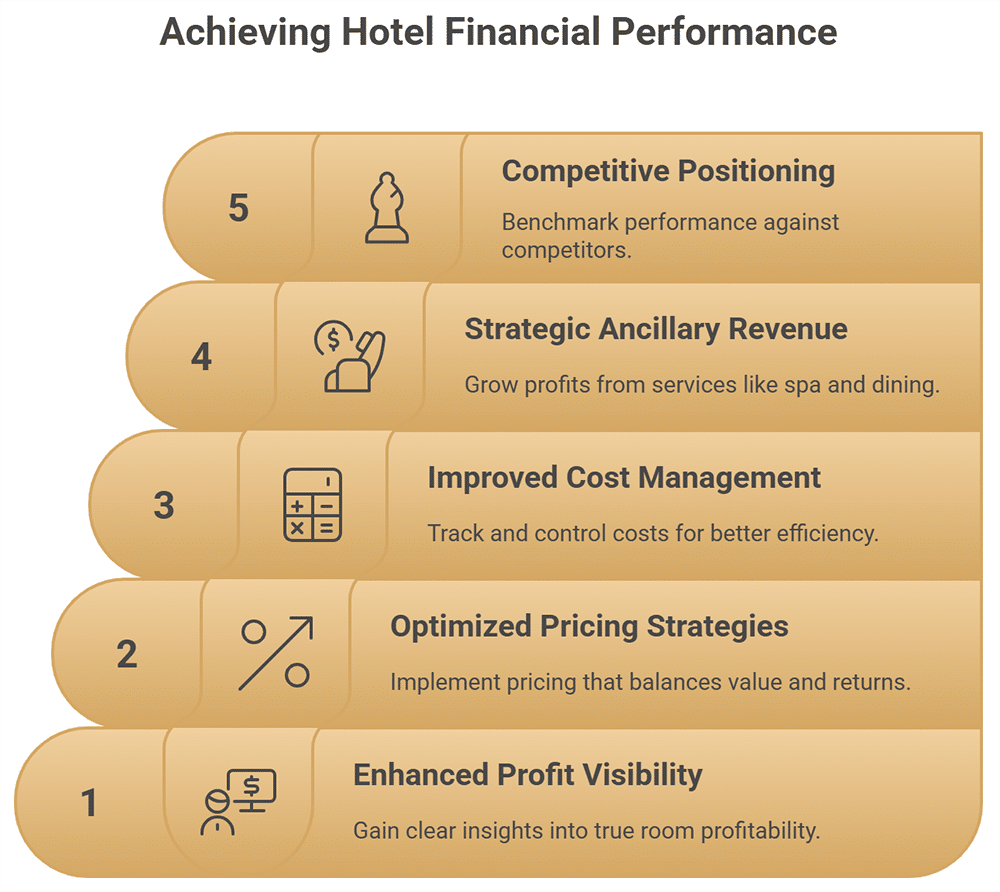
Uses and Limitations
The main use of ARPA is for revenue management purposes, because it shows how much revenue a hotel takes from each account on average. This can help show business growth, or when performance declines, which may indicate that prices need to be adjusted or that more customers need to be attracted.
One potential limitation of the KPI is that it measures revenue on a per-account basis, rather than per-user. Although the metric is sometimes referred to as average revenue per user, this is not an accurate description of what the metric shows, because some users may have more than one account.
How Major Hotel Chains Use ARPA
Big hotel chains around the world use ARPA as a key tool to improve profitability and stay ahead of the competition.
Marriott International applies ARPA through its Revenue Management Advisory Services (RMAS), which supports over 2,200 hotels. Instead of just tracking room revenue, Marriott analyzes total guest profitability, including costs and extra spending. This strategy helped Marriott achieve 4.3% global RevPAR growth in 2024, boosted by the 228 million members of its Bonvoy loyalty program.
Hyatt Hotels Corporation takes a similar approach by looking beyond traditional metrics. In Q4 2024, Hyatt reached 5% system-wide RevPAR growth by focusing on Net Package RevPAR for all-inclusive resorts. Their detailed cost tracking and focus on guest spending worked especially well in luxury and resort properties.
ARPA vs Related KPIs (RevPAR, ARPAR, TRevPAR, GOPPAR)
KPI stands for Key Performance Indicator. With KPI, you can measure and identify areas of success and failure, as well as trends related to demand and customer behavior. To understand ARPA’s importance, hoteliers must see how it fits among other well-known hotel performance indicators.
RevPAR
RevPAR measures room revenue per available room, but it ignores costs and extra income sources. ARPA, on the other hand, considers variable costs and ancillary revenue, giving a more realistic view of profitability. Hotels prefer ARPA today because it highlights actual earnings, not just sales figures.

Luminita Mardale, Director of Marketing and Business Development, Vienna House“RevPAR, ADR, and Occupancy are some of the most important KPIs that help hotels to optimise revenue, especially when we have a high/low season fluctuation. Another important factor is WCR (Website Conversion Rate), which helps hotels to measure the percentage of website visitors who complete a booking. The Direct Booking Ratio (DBR) helps to see the percentage of total bookings that come directly to the website, bookings that are more profitable than reservations made via an OTA with a high commission.” Click here to read more revenue management tips from our Revenue Management Expert Panel. |
ARPAR
ARPAR adjusts RevPAR by considering occupancy, but it still misses critical cost factors and add-on revenues. ARPA fills this gap by accounting for both expenses and upselling income, offering hoteliers a clearer picture of true room profitability. This makes ARPA more accurate and practical for decision-making.
Ira Vouk, Revenue Management Expert, puts it:
“ARPAR proved to be way more accurate and useful than RevPAR as it accounts for variable expenses and also considers ancillary revenue-generating POS, giving a better picture of inventory profitability.”
TRevPAR
TRevPAR includes all revenue streams, rooms, food, spa, and more, yet it doesn’t reflect operating costs. ARPA balances both sides: additional revenues and variable costs per room. For hotels aiming to maximize profit rather than just revenue, ARPA gives sharper insights, making it more useful for profitability optimization.
GOPPAR
GOPPAR focuses on the property’s overall operating profit per available room, offering a broad profitability view. ARPA narrows it down, emphasizing per-room performance by factoring in costs and upsells. Together, they complement each other, but ARPA is ideal for room-level strategies while GOPPAR suits total business analysis. If you want to learn more about GOPPAR, read What Is GOPPAR?
Besides ARPA, other important Revenue Management KPIs are Occupancy rate, RevPOR, ADR, TRevPAR, NRevPAR, and EBITDA.
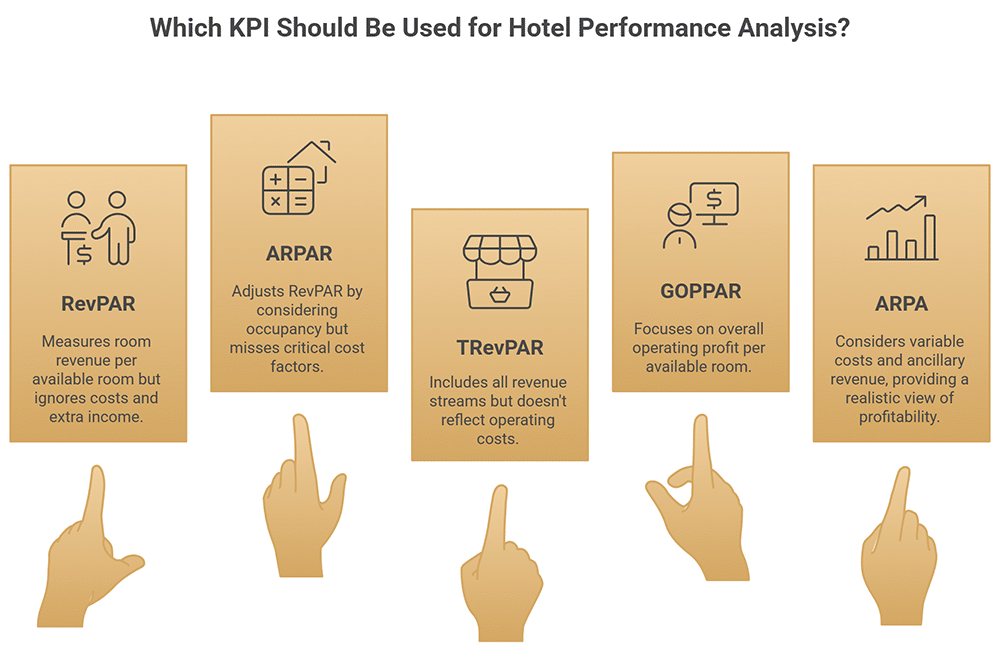
Global Hotel Industry Outlook for ARPA: 2025–2035
The hotel industry is entering a decade of major change, and ARPA (Average Revenue Per Available Room) will play a central role in guiding decisions. The global hotel market is expected to grow from USD 5.72 trillion in 2025 to nearly 9 trillion by 2035, according to Future Market Insights.
This growth is driven by technology, rising guest expectations, and competition from alternative accommodations. In this environment, traditional revenue models are no longer sufficient, and hotels must focus on profitability metrics such as ARPA.
Industry forecasts highlight this need. PwC predicts U.S. RevPAR growth slowing to just 0.8% in 2025, compared to stronger GDP growth. At the same time, CBRE projects only 2% RevPAR growth, with rising costs likely to squeeze profit margins. These trends show why hotels must look beyond occupancy and room revenue and measure total profit.
ARPA supports this shift by capturing the full value of guest spending, from rooms to restaurants, spas, and meeting facilities. Technology will make ARPA even more powerful, with AI-powered analytics and predictive modeling enabling real-time profit optimization. Hotels that invest in ARPA today will be better prepared for inflation, higher labor costs, and changing guest demands over the next decade.
FAQs: ARPA
Hotel ARPA helps measure true profitability beyond room revenue. By applying the strategies and tips shared, hoteliers can improve performance, boost profits, and achieve long-term growth through smarter revenue management decisions.
More Tips to Grow Your Business
Revfine.com is the leading knowledge platform for the hospitality and travel industry. Professionals use our insights, strategies, and actionable tips to get inspired, optimize revenue, innovate processes, and improve customer experience.
Explore expert advice on management, marketing, revenue management, operations, software, and technology in our dedicated Hotel, Hospitality, and Travel & Tourism categories.
This article is written by:
Hi, I am Martijn Barten, founder of Revfine.com. With 20 years of experience in the hospitality industry, I specialize in optimizing revenue by combining revenue management with marketing strategies. I have successfully developed, implemented, and managed revenue management and marketing strategies for individual properties and multi-property portfolios.

